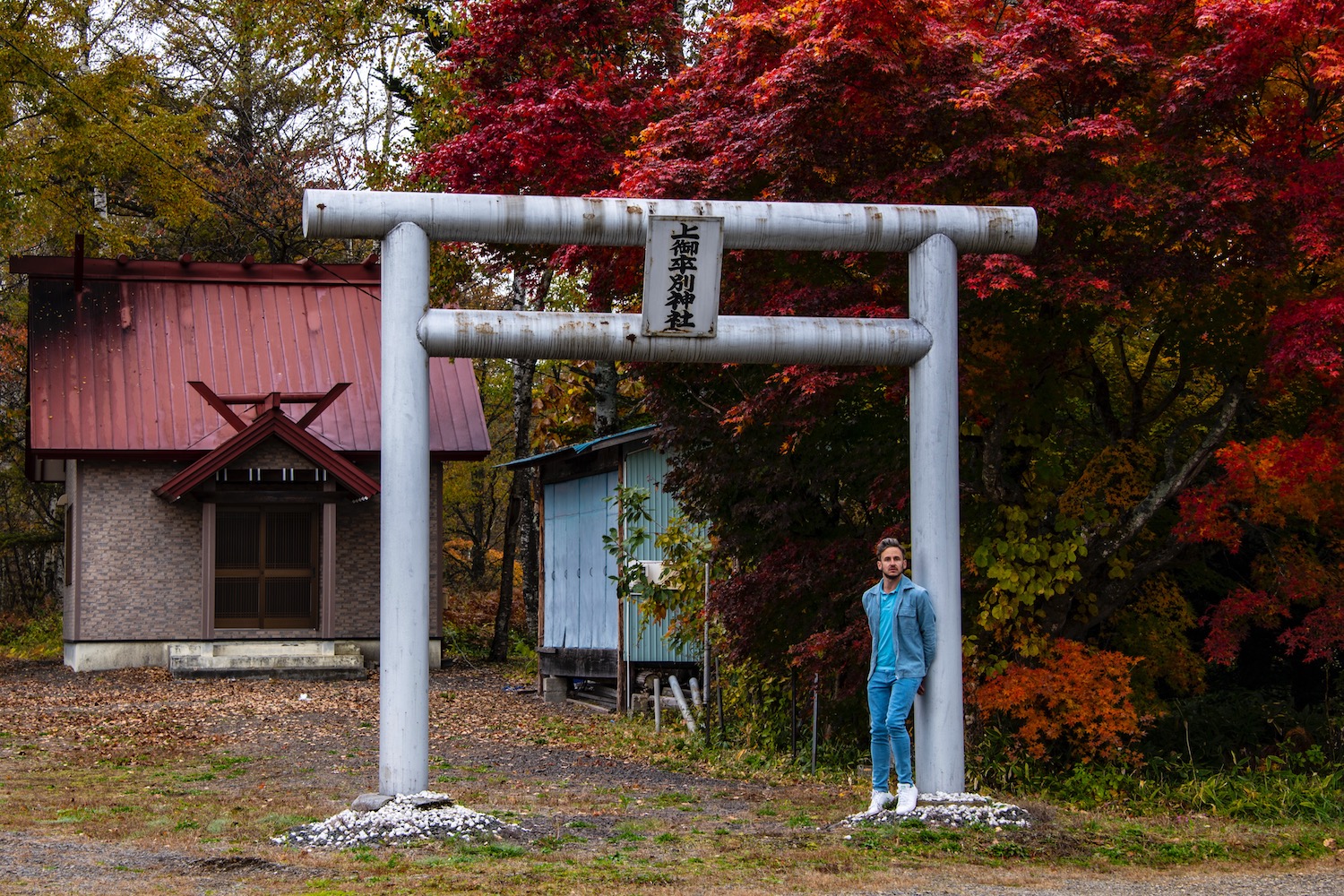The first buck had a carob coat, which is why he caught me so off-guard as he sprinted through my peripheral vision. I should’ve been terrified—I was taking pictures with my DSLR while driving, albeit on a straight and predictable road—but I just felt perplexed by his color. Where I’m from, deer tend to be more on the tawny side.
I was nearly to Sounkyo Onsen, my penultimate planned stop of the day, when I noticed him. I felt exhilarated by the brilliance of the reds, oranges and yellow that carpeted the craggy karsts lining the way, which seemed even more piercing than those that had colored Shirogane Blue Pond, Shirahige Falls and Mt. Biei earlier in the day, though I realized even in the moment that my jubilation may have been clouding my perception.
The first doe had a more normal coloration, but was stationary and grazing. By this time—I was done at Sounkyo and had begun the long slog down toward the ocean to Kushiro, where I’d be sleeping—I reacted appropriately: With terror that she might leap out into the rude and cause me to wreck my rental car. I wasn’t taking pictures anymore.
I slowed until I nearly stopped; she did cross the road slowly, though I can’t say whether she would’ve had more pep in her step had my foot been heavier on the gas. Before I knew it she’d disappeared between a scarlet momiji billow; the next cars that passed in the opposite lane would’ve seemed fast even by American standards. Here, they seemed reckless.
The second doe didn’t move at all, though by the time I saw her I’d lost elevation; the trees had lost a great deal of their brilliance. The sun had begun to set and to make matters worse, carcasses of dead elephant ear shrubs lined the shoulder on either side, their scaffolding wafting around in the breeze like…well, a deer leaping out of a gorge and in front of a vehicle.
As for the second buck? Well, I think I’m going to have to provide some context for that.
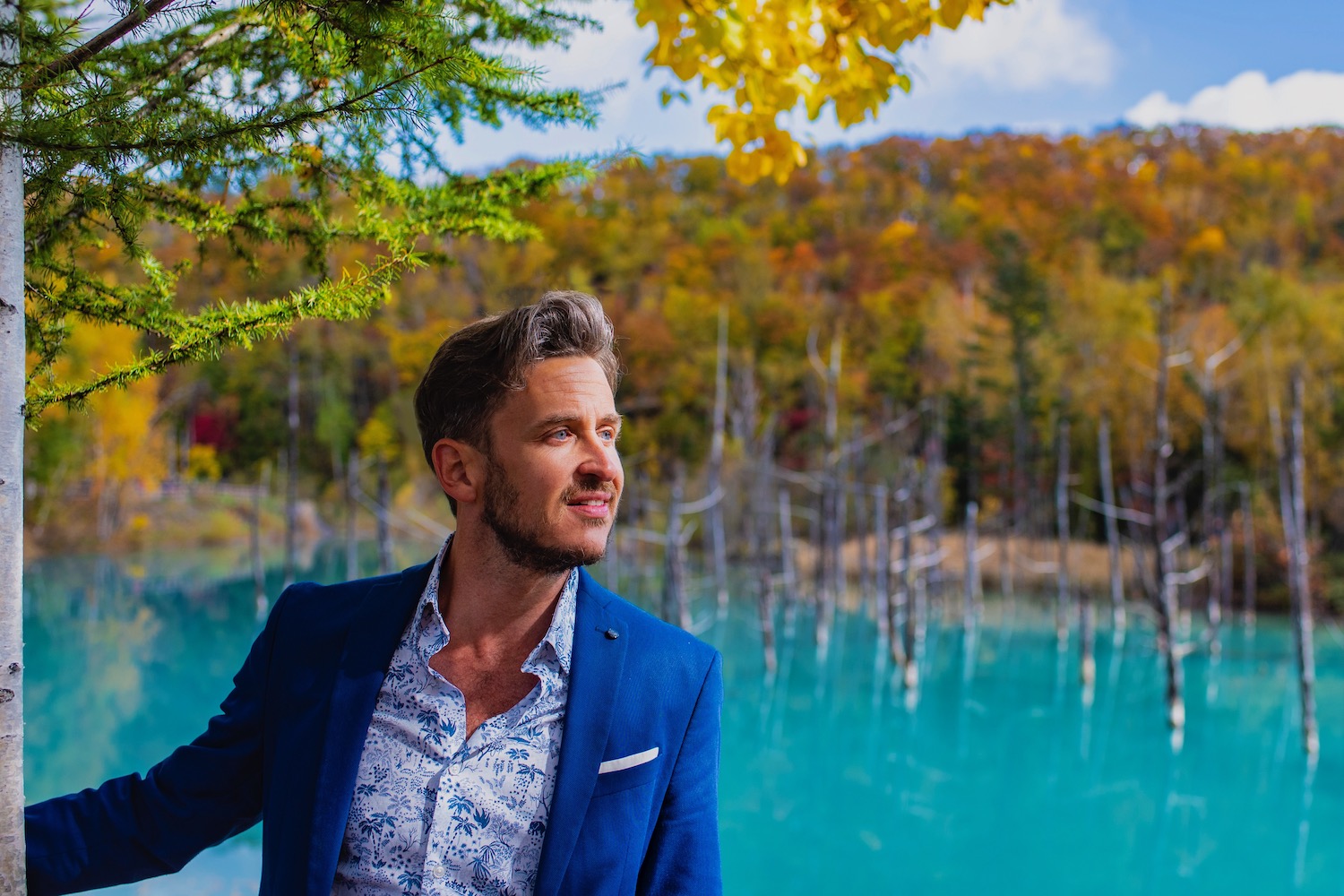
In the early summer of 2018, literal days after I launched this website, I was visiting family in St. Louis (I lived in Bangkok at the time) when, in broad daylight on a scorching afternoon, a large doe kamikazed into my rental car. I was unharmed, but only by chance: Had the doe (whose collision with the vehicle totaled it, and decapitated her) been a buck, his antlers very likely wouldn’t shattered my windshield and slit my throat.
Ever since then, I’ve been extremely paranoid driving anywhere with an endemic deer population, especially during the autumn months when they’re most active—and especially in the evening.
The second buck I saw yesterday, to be sure, was splayed out on the concrete. The incident stopped traffic, in fact; each vehicle (I was the third after it happened) was made to slowly go around his body, as if it were a crime scene that had to be preserved. Certainly, he looked like he’d been murdered.
Thankfully, by the time I began heading north from Kushiro toward lakes Akan, Mashu and Kussharo, all the shika had apparently gone to bed for the day…I mean morning.
Instead, the wildlife that caught my eye was a sedge of tancho, the red-crested crane that was nearly extinct when conservation efforts began decades ago, flying through the air as if they were ordinary birds. While none were present at the Tsurimidai Observation Deck where I’d previously seen them this past February, they were scattered throughout various farmers’ fields, including ones with plentiful foliage beyond the now barren soils.
If it sounds like I’m excited, it’s because I am: Today was the day of my trip I expected the least from—there’s virtually nothing written about koyo in eastern Hokkaido—and yet less than an hour into my drive, I was already so creatively stimulated that I could’ve stopped there and returned home fulfilled.
(I didn’t even mention the random, deserted Shinto shrine I found, or the fiery maple tree that looked like a blaze about to engulf it.)
Would you believe that prior to arriving here, I actually psyched myself out into thinking the perhaps the colors were nowhere need their peak? Keeping in mind, once again, that there’s almost nothing written online about autumn colors in this part of Hokkaido online, I tried to extrapolate the status of the leaves from Instagram. I guess the “recent” posts I saw were…not recent.
This notion seemed nothing short of absurd as I looked down on Lake Kussharo from Bihoro Pass. The hillsides surrounding the massive caldera, as well as the island rising out of it and the peninsula jutting into it, were speckled with aki no iro, like an inverted Seurat painting: When I zoomed in on them, they came into clearer focus.
The journey from here to the coast—I had to hang a right at Shari—and then onward to the Shiretoko Peninsula took less time than I thought, so I sat down for lunch in Utoro, instead of grabbing something from the konbini as I’d planned to do. I chose a place that served deer yakiniku, wanting to do my part to control the local population of car destroyers.
At this point, I should’ve headed straight to Shiretoko Pass, and then to Shiretoko Five Lakes, and then to my ryokan so that I could dip my naked body into its outdoor onsen before any other guests got there.
Instead, I got distracted: Leaving the restaurant, I noticed there was a viewpoint atop the massive rock formation rising above Utoro Port; I had little choice but to climb the hundred stairs leading up to its precipice.
If I’m honest, I preferred the view here—Mt. Rausu looks more dramatic rising above the sea than it does with a road snaking beneath it—to the one at Shiretoko-toge, even if the witchy, almost alien forests that carpeted the foothills of Rausu-dake were on their own worth the drive. A random maple or birch tree still decked out in copper, ruby or gold would appear once for every 5-10 of the barren, white-barked trees, whose ghostly branches looked like deadened coral reefs.
The further east you travel in Hokkaido, the less like Japan—the less like Earth—it seems, especially during the autumn. Hell, at Shiretoko-goko, the boardwalk railings are electrocuted, lest a bear do his part to control the local population of car destroyers.


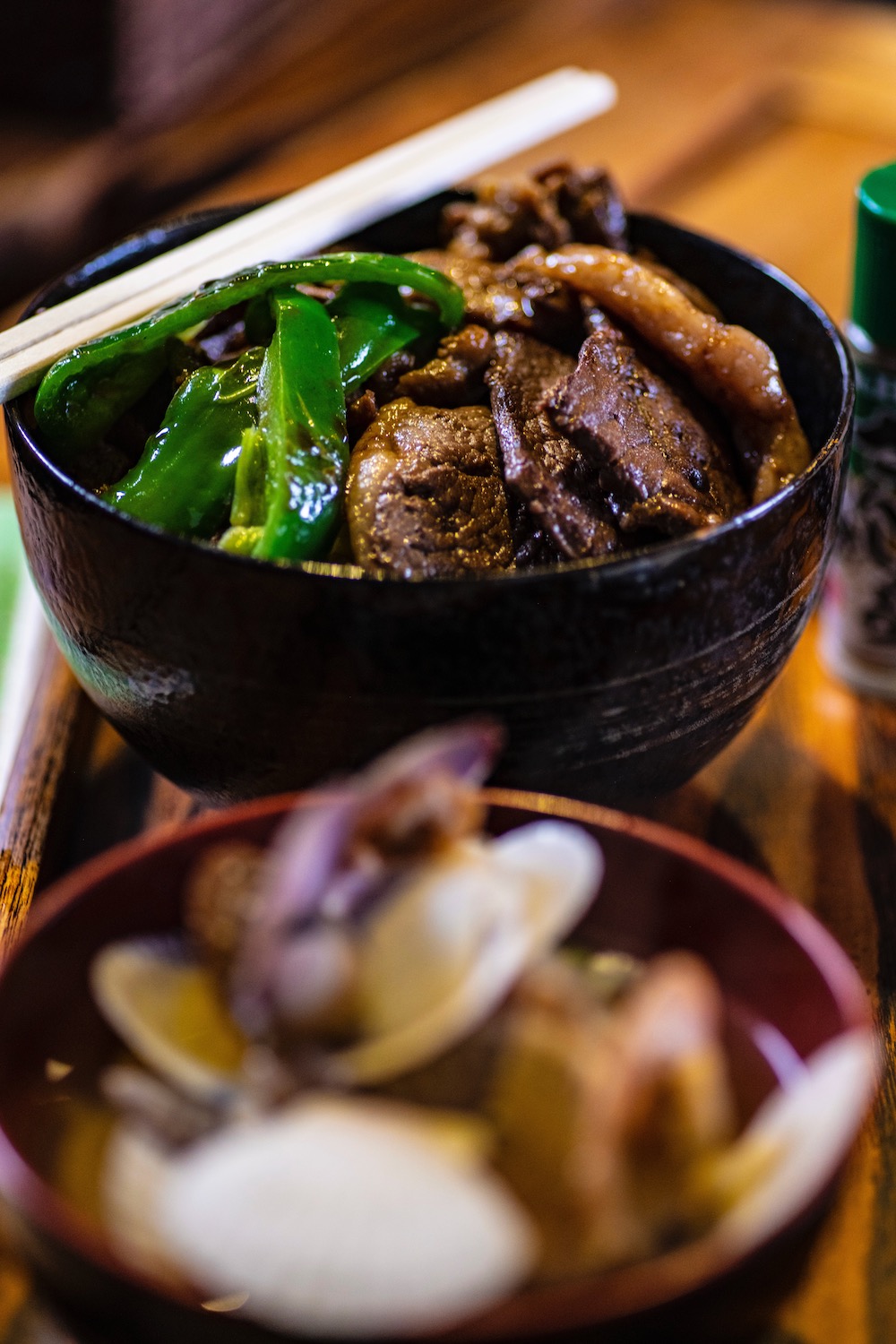
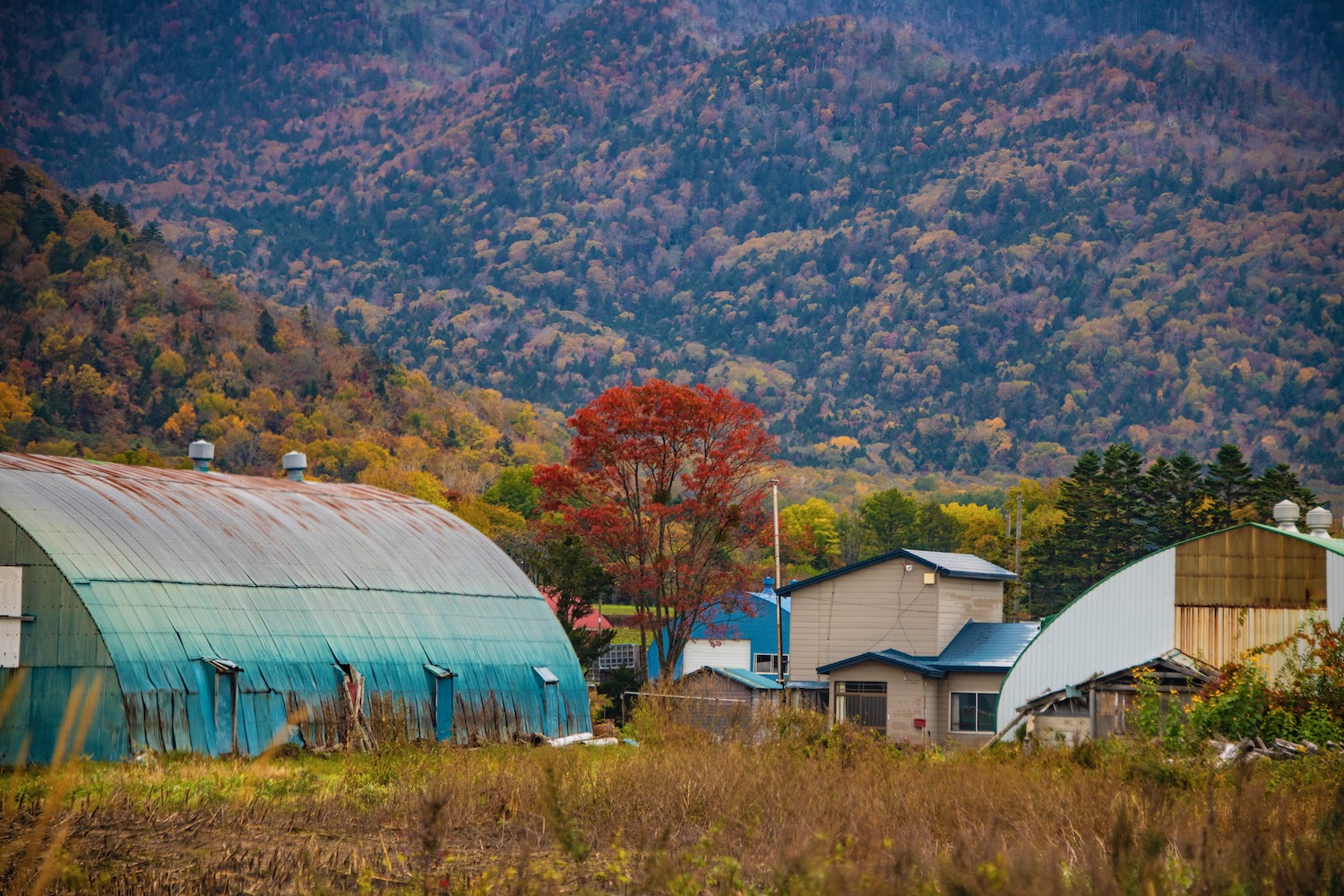
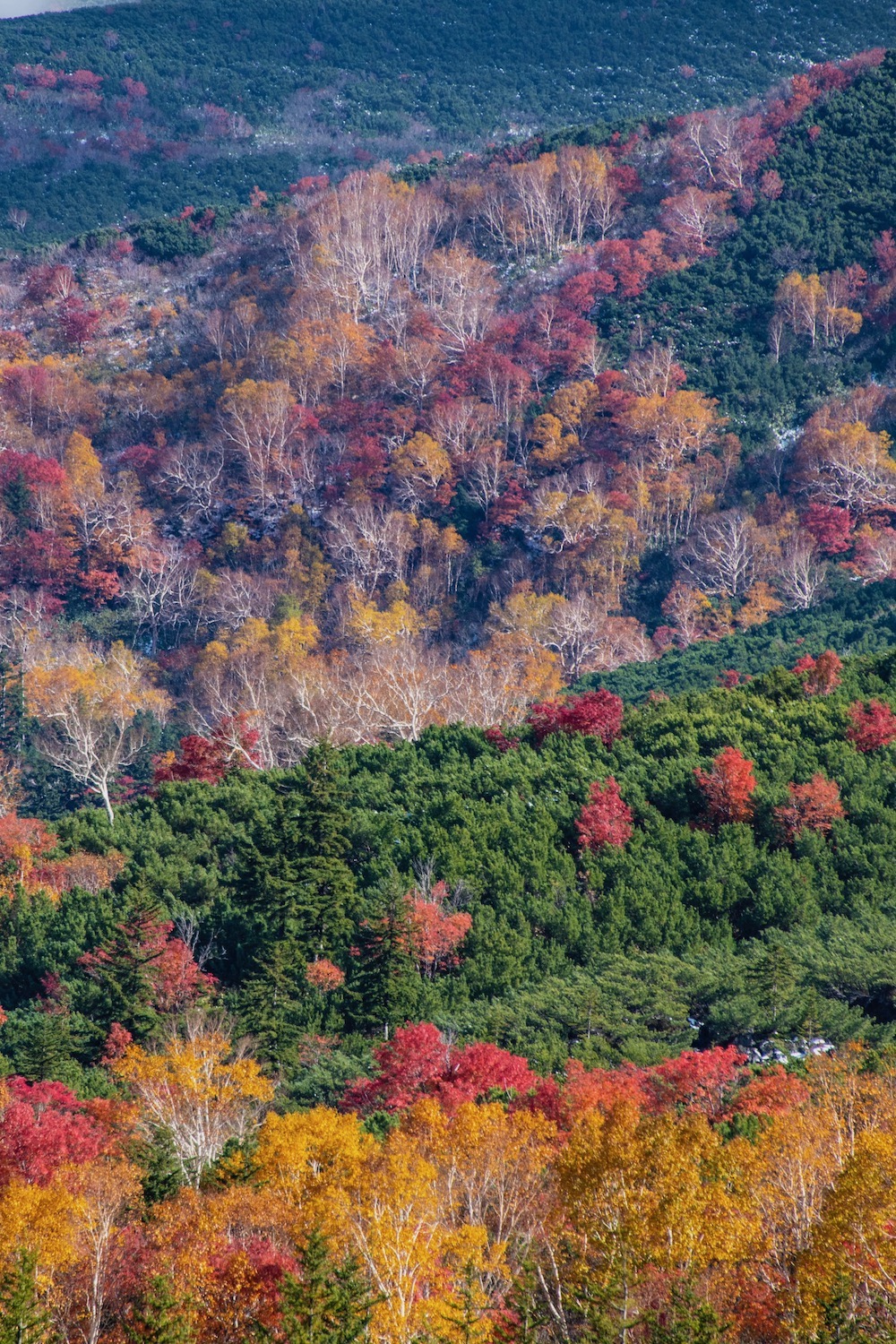
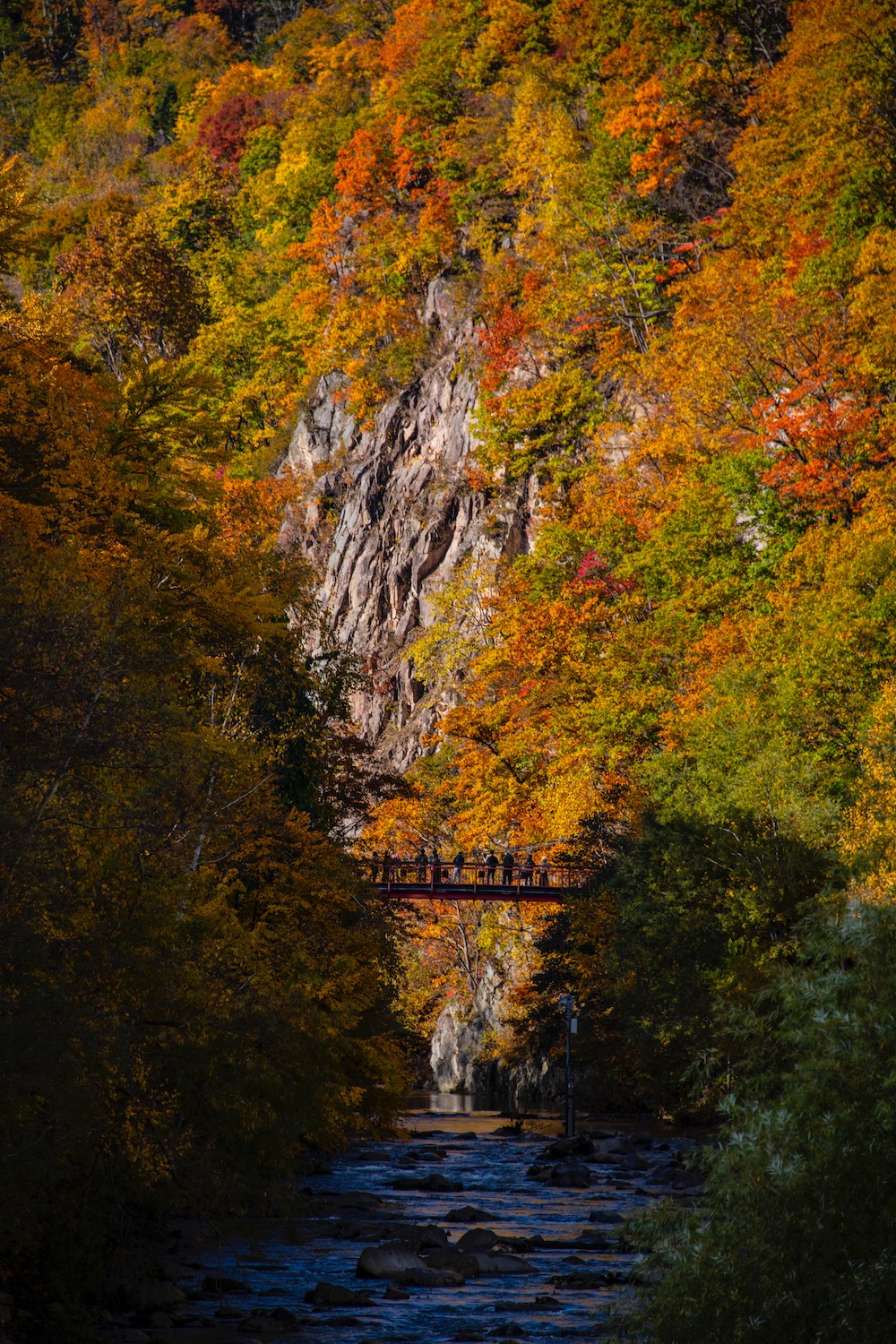
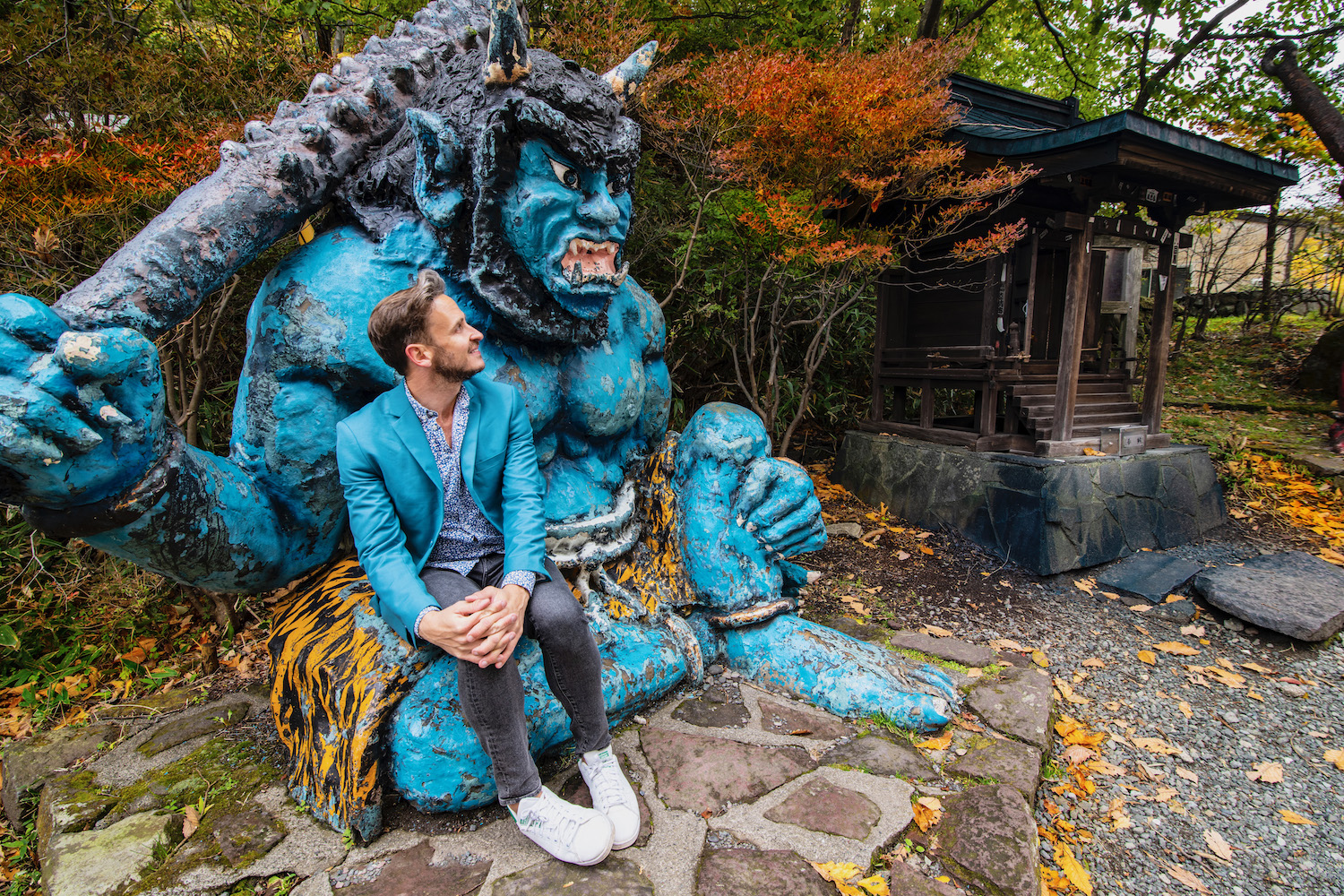
It rained torrentially all day Friday, and seemingly all over the island. I know this because it didn’t matter to me: I spent all day in transit, driving from Utoro back to Asahikawa, and then traveling by train from Asahikawa back to Sapporo.
Here, I was once again thankful for the veritable underground city that exists beneath the above-ground one. As it turns out, it isn’t just valuable amid the feet-deep snow that blanketed the earth the last time I was here, but the unrelenting rain.
A bone-chilling cold rain: The kogarashi, I remembered reading in a random article that had come up in my browser a day or two earlier, was in the process blowing in from Siberia.
By Saturday morning, the year’s first winter wind had blown literally all the clouds out of the sky, at least the patch of sky above me as I walked to Sapporo Station to pick up my rental car. There was darkness on the horizon as I drove west out of the city, but I tried not to dwell on that.
My first stop was Jozankei, an onsen town where I’d unwittingly stayed on my first, disappointing trip to Hokkaido nearly 10 years earlier. The last time I’d seen it, it (like Sapporo) was buried in mounds of white; I remember sitting in a rooftop hot spring and looking down on the scene, almost certain it would be the only time I’d do so, what with how disappointing that particular trip had been.
In the present day, although it would probably take a few more kogarashi-chilled nights for the autumn leaves to reach their full potential, I did feel a sense of satisfaction gazing in the same direction again, but with different eyes.
My second stop was entirely new to me: Makomanai Takino Cemetery, a bizarre burial ground that required me to backtrack a bit. Opened around the same time I was born and centered around replicas of Stonehenge and the Easter Island monoliths, it’s also home to a giant Buddha image half-buried in a half-sphere of earth that, during the summer, is carpeted in Hokkaido’s increasingly famous lavender. (The plants are still there—a few still had some purple flowers on them, to my absolute shock).
Driving through the back half of the cemetery—the part where all the bodies are actually buried—I pondered the strangeness of the place, and whether I might ever feel compelled to go back. The clouds amassing off to the west grew thicker, but not necessarily darker.
Indeed, it wasn’t until I was nearly at Noboribetsu Onsen (which, you might remember, I last visited just this past winter) that all traces of blue were gone from the sky—I’d been hoping that by the time I got there, I might’ve had a bit of natural sunlight to work with.
The good news was that, contrary to the forecast from the Japan Meteorological Corporation, many of the trees around famous Hell Valley and the less famous geothermal formations appeared to be nearing the precipice of their vibrance, which made up for the grayscale monochrome of the canvas above me.
Before returning to Sapporo—it was clearly about to start raining again, so I nixed a planned excursion to Lake Toya—I paid a visit to the oni statues that stand between the main hot springs town and the entrance to Jigokudani. As had been the case with Sapporo and the less demonic structures there, it was strange seeing them completely exposed, and without a screen of falling snow between us.
Last time, I had felt more drawn toward the red one (there are two); this time, I noticed that my outfit was basically the same color scheme as the blue one. I chose to interpret this as serendipity, although I suppose I should do more research into what an oni is and what it does before concluding it.
Sitting down on his lap to put my equipment back into the bag before the small drops of rain falling turned into a torrent, I was probably a bit delirious from how underdressed I was: The chill of the kogarashi is real, y’all.
And so I imagined myself in a conversation with the the hellhound.
“What changed your mind?” He didn’t ask me. “What changed your heart?”
It was a great question, especially because there was no pressure to answer quickly since…well, he’s a statue, and he never asked it.
But, being almost 40 now, I already knew the truth—and not just when it came to Hokkaido: Hate, if you sit with it through enough seasons, will almost always eventually metamorphosize into something approaching love.
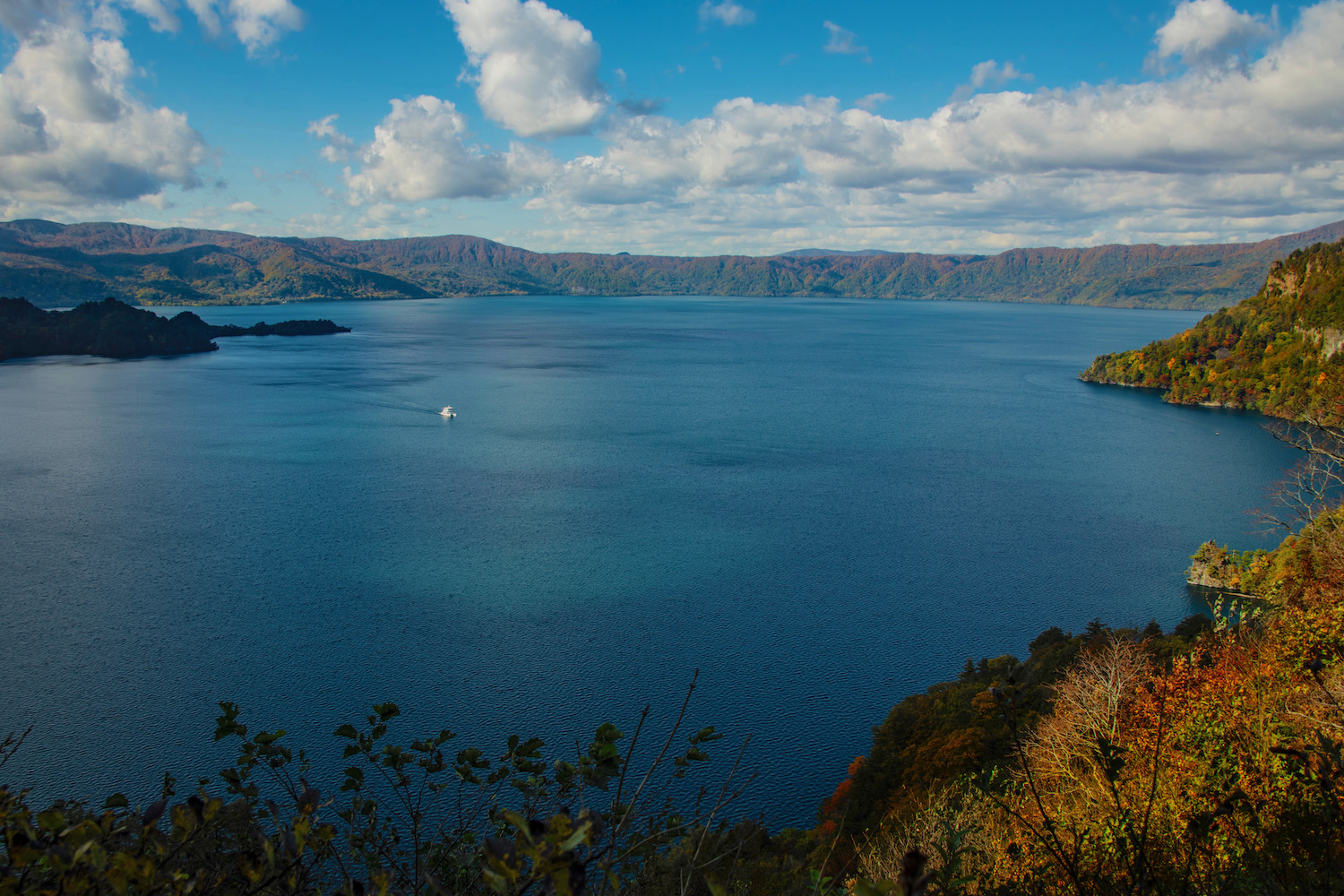
Driving up to Aomori prefecture’s Lake Towada on my last day in northern Japan in autumn, I felt satisfied. And not just because of the sweet juices dripping down my chin.
(That sounded dirty, so allow me to clarify: On my way out of Aomori city, I’d stopped at an apple orchard and purchased two massive Hirosaki Fuji no ringo.)
Not was my contentment simply as a result of how swimmingly my sojourn around Hokkaido had gone, even if it I now think fall may be my favorite of the four seasons I’ve now experienced on the island.
No, it was deeper than that. Or, at least, longer ago.
You see, this wouldn’t be my first time at Towada-ko. I’d come here way back in 2017, a few days before jetting off to Iran, on my last Japan press trip before making the decision to launch this website separate from my other one.
My life changed in these rural reaches of Aomori-ken, although—to the dismay of certain locals, no doubt—not because of the folklore that Jesus (yes, that one) actually walked on this water (yes, some people around these parts actually believe that).
To be able to create for myself an experience I’d previously been given—to be able to specify all its parameters, right down to the color of the leaves on the trees—is the definition of empowerment. Freedom in motion, and in living color.
Autumn in reverse: A sort of resurrection, even though I’d survived my brush with death, and had managed not to repeat it on this trip.



